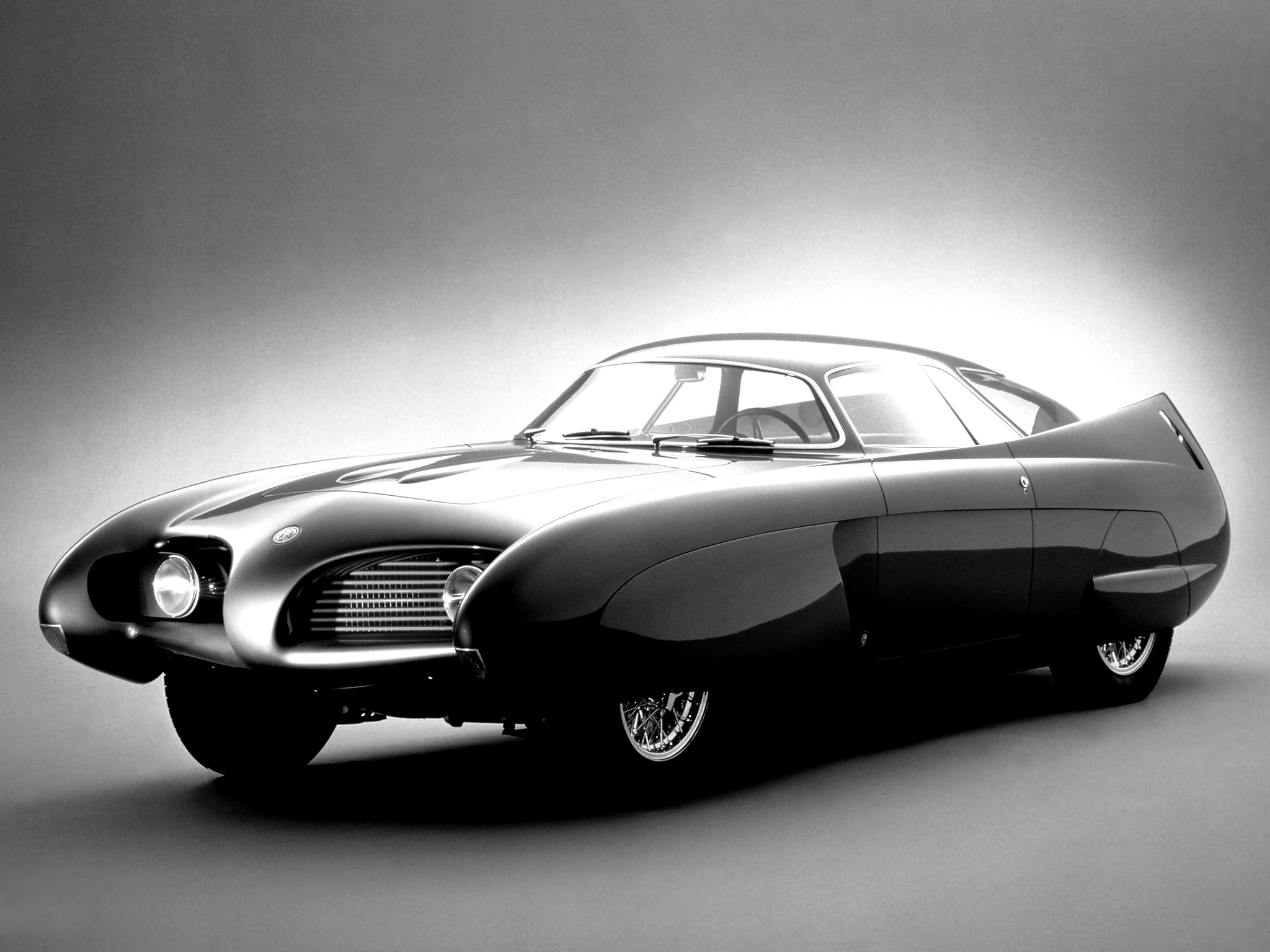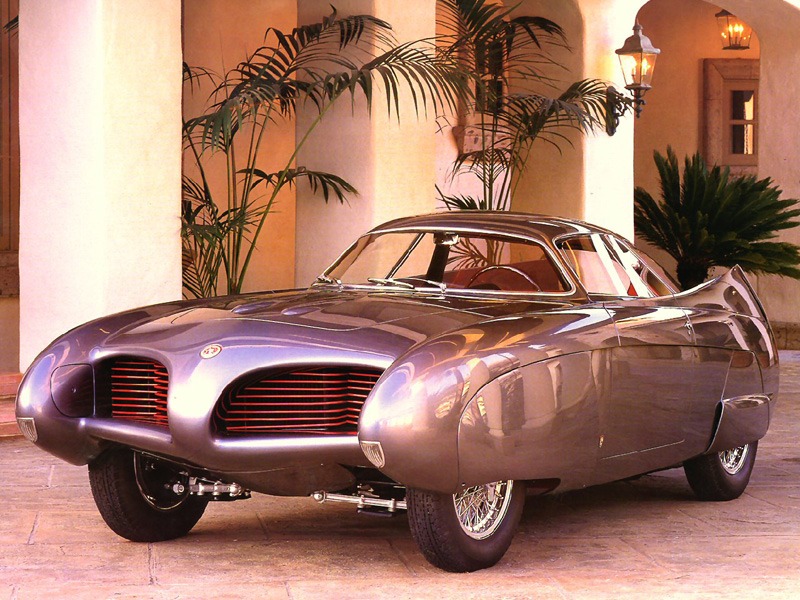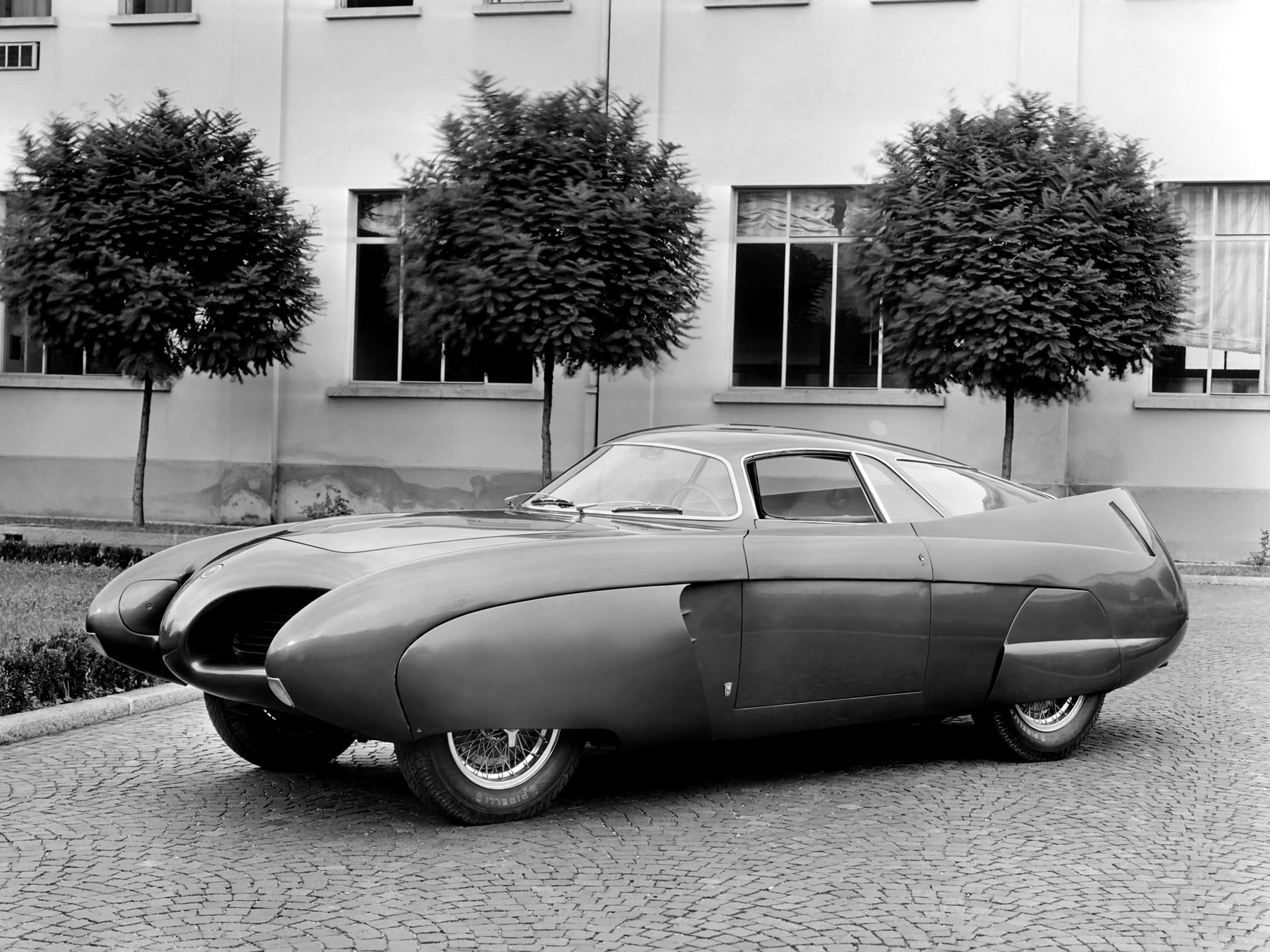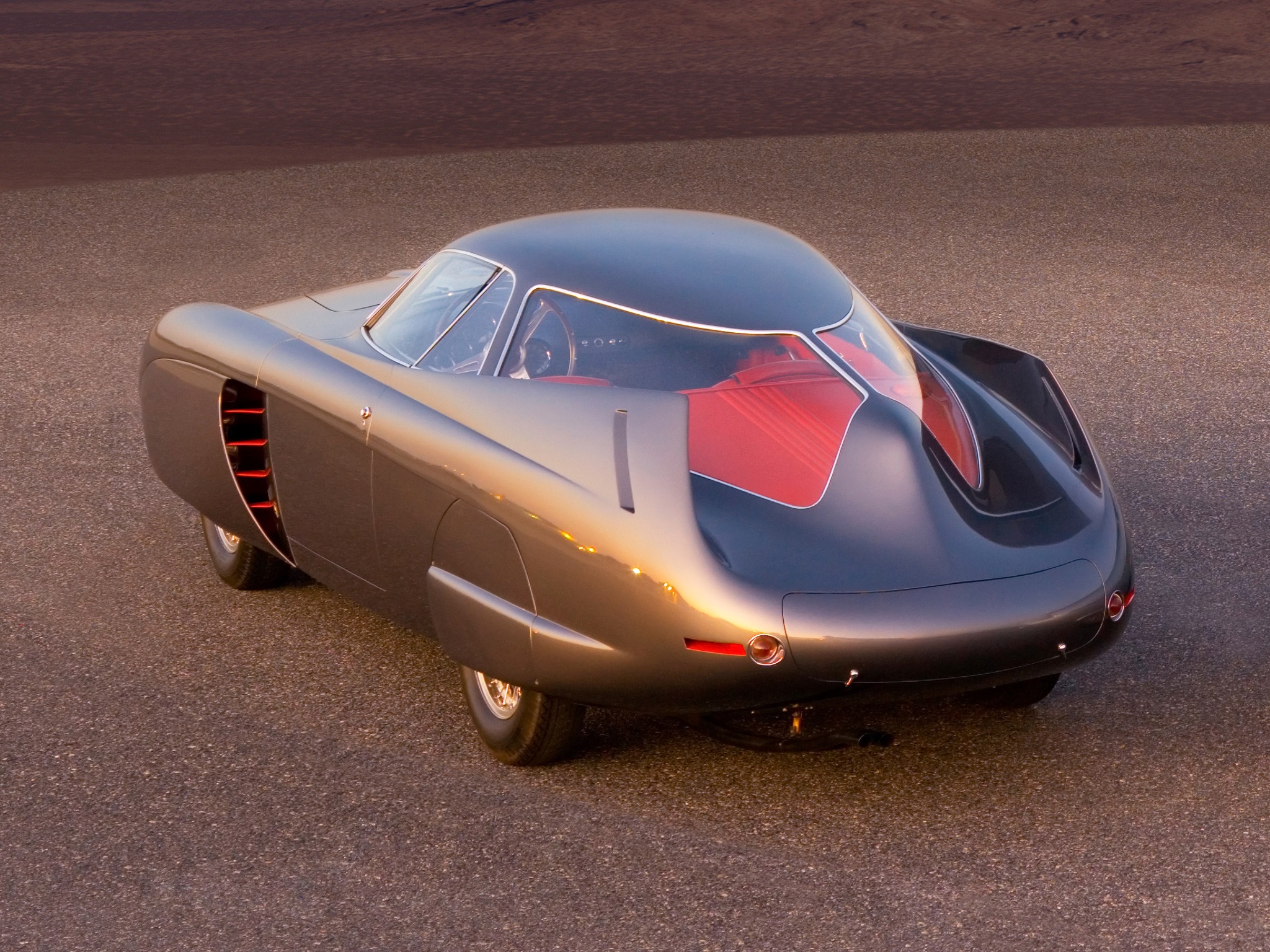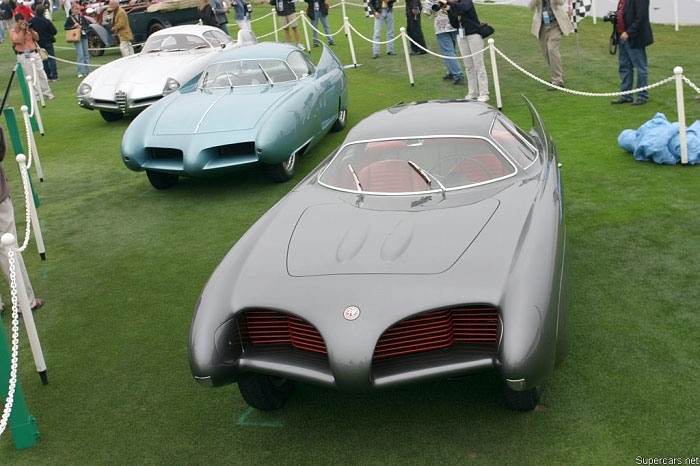The Giulietta Sprint success story in 1953 and 1954 was not the only thing bringing Bertone fame and fortune at that time. In the mid-fifties the reputation of the Turin bodywork builder owed much to the revolutionary B.A.T. 5 line, and following on from that the B.A.T. 7 and the B.A.T. 9. The Berlinetta Aerodinamica Tecnica 5, or B.A.T. 5 takes its general inspiration from the 1952 Abarth 1500 coupe, and its mechanics from the Alfa 1900 Sprint. The acronym was a great hit in the English-speaking world because the car was actually reminiscent of a bat, with its tail shape hinting at two tucked-in wings.
The design of the model was based on a study of aerodynamics. The shape of the front in fact aims to eliminate the problem of airflow disruption at high speeds. The design also aims to do away with any extra resistance generated by the wheels turning, as well as achieving a structure which would create the fewest possible air vortexes. In practice these rigorous criteria would allow the car to reach 200 km/h with the 100 Hp engine mounted as standard. The design that Bertone came up with was for an extremely light car (1100 kg), the ultimate in streamlining, with side windows at a 45 degree angle respect to the body of the car and a large windscreen which blends in perfectly with the almost flat roof. The most surprising part of the car has to be the tail, with the length-ways rear windscreen divided by a slim pillar, and the two fins tapering upwards and slightly inwards, for a highly aesthetic finish. There was no shortage of positive feedback: the car was an immediate hit for its aerodynamics and noteworthy stability at high speeds. Bertone had solved the problem of aerodynamic stability, creating a car with an excellent index of penetration.

